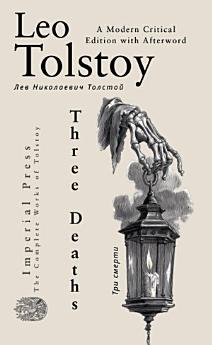Three Deaths
The Collected Works of Leo Tolstoy Aklat 66 · Imperial Press
E-book
176
Mga Page
family_home
Kwalipikado
info
reportHindi na-verify ang mga rating at review Matuto Pa
Tungkol sa ebook na ito
"Three Deaths," known in Russian as "Три смерти," was written in January 1858 and first published in 1859 in the journal "Библиотека для чтения" (Biblioteka dlya chteniya). The story presents the demise of three distinct beings: a lady, a coachman, and a tree. The lady, Maria Dmitrieva, is depicted as dying miserably, consumed by complaints and falsehoods even in her final moments. This concise composition juxtaposes the final moments of three disparate entities—a complaining noblewoman, a stoic coachman, and a felled tree—offering a stark contemplation of mortality and the varying degrees of acceptance in the face of ultimate cessation. It compels a consideration of what constitutes a "good" end to existence.
In stark contrast, the old coachman, Fyodor, faces his end with a calm acceptance, having made peace with his fate. The third "death" is that of a tree, which is felled, its collapse described with the visceral impact of a living creature's demise, set against the backdrop of renewing spring nature. Tolstoy's own commentary on the work highlights the lady's pathetic end due to her lifelong deceit, contrasting it with the peasant's tranquil departure, thereby inviting a philosophical inquiry into the authenticity of life and death.
I-rate ang e-book na ito
Ipalaam sa amin ang iyong opinyon.
Impormasyon sa pagbabasa
Mga smartphone at tablet
I-install ang Google Play Books app para sa Android at iPad/iPhone. Awtomatiko itong nagsi-sync sa account mo at nagbibigay-daan sa iyong magbasa online o offline nasaan ka man.
Mga laptop at computer
Maaari kang makinig sa mga audiobook na binili sa Google Play gamit ang web browser ng iyong computer.
Mga eReader at iba pang mga device
Para magbasa tungkol sa mga e-ink device gaya ng mga Kobo eReader, kakailanganin mong mag-download ng file at ilipat ito sa iyong device. Sundin ang mga detalyadong tagubilin sa Help Center para mailipat ang mga file sa mga sinusuportahang eReader.




